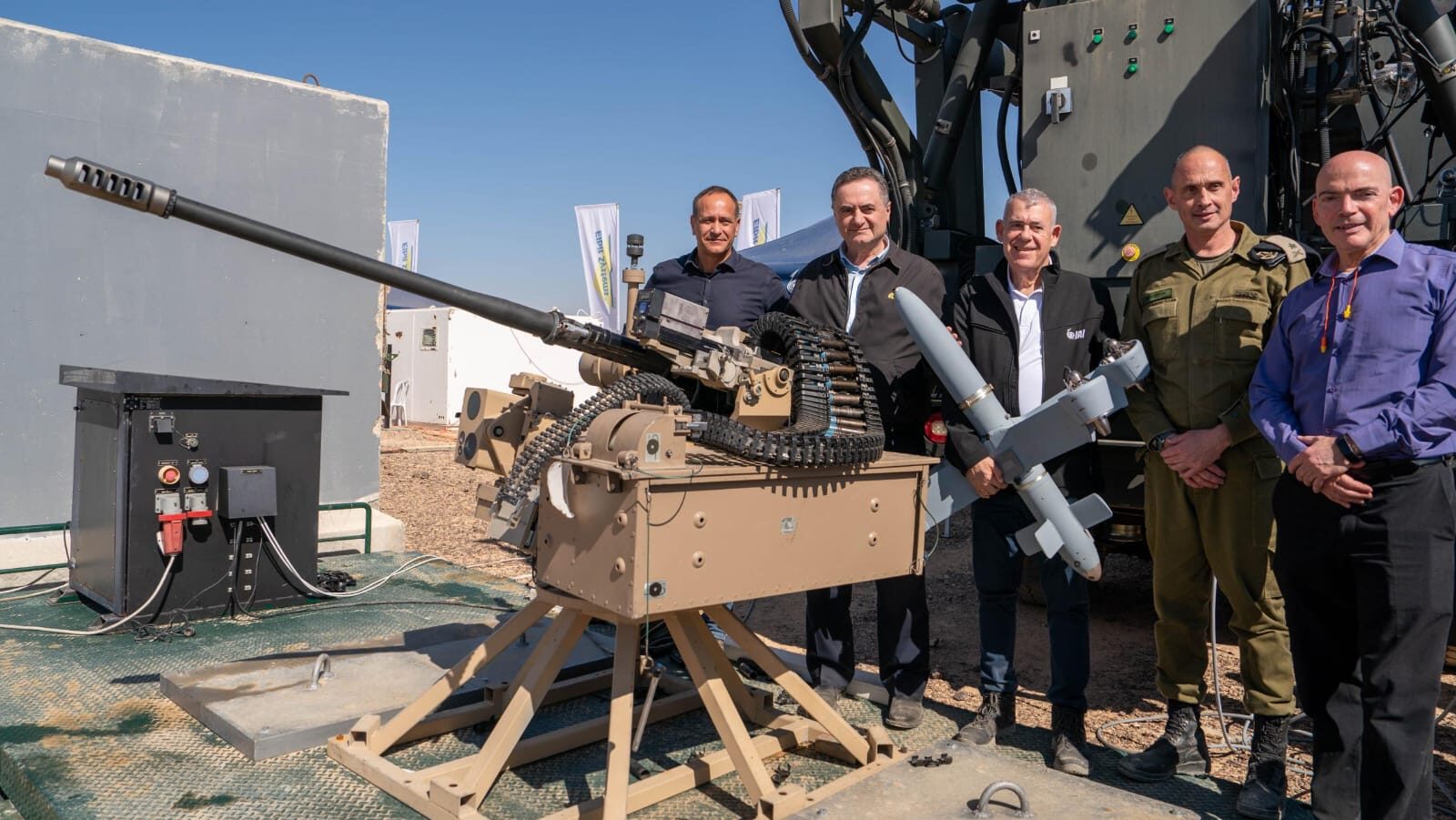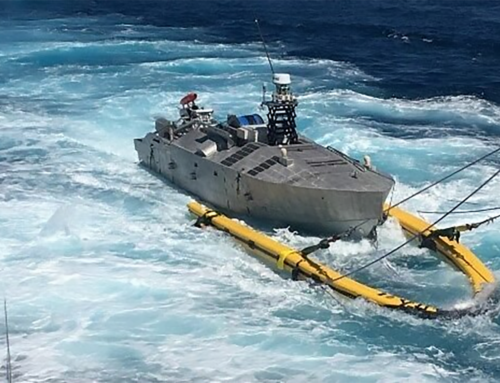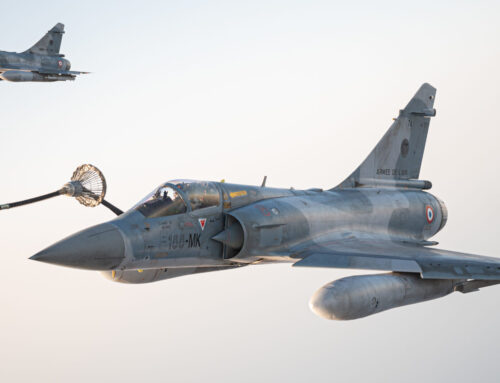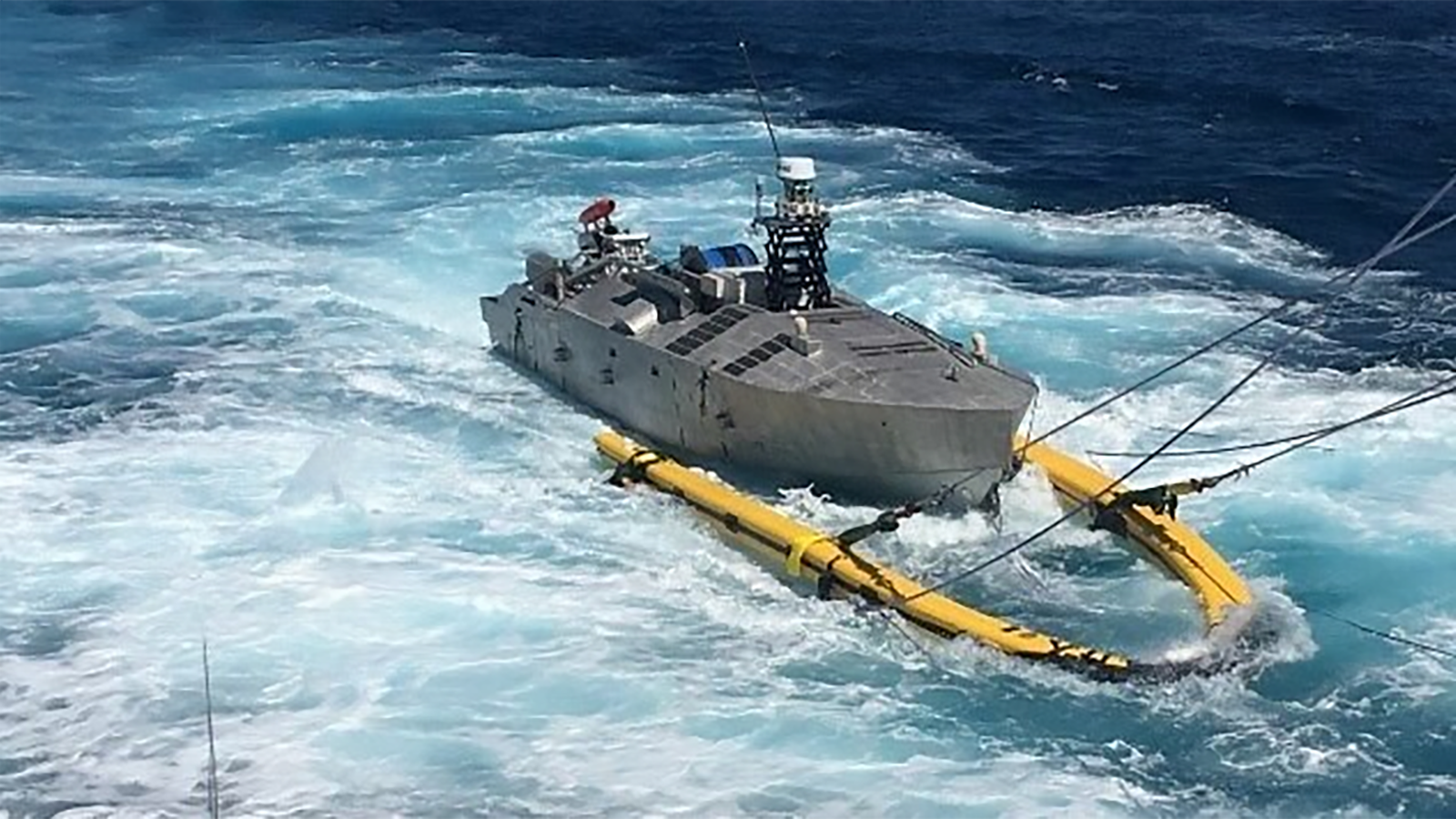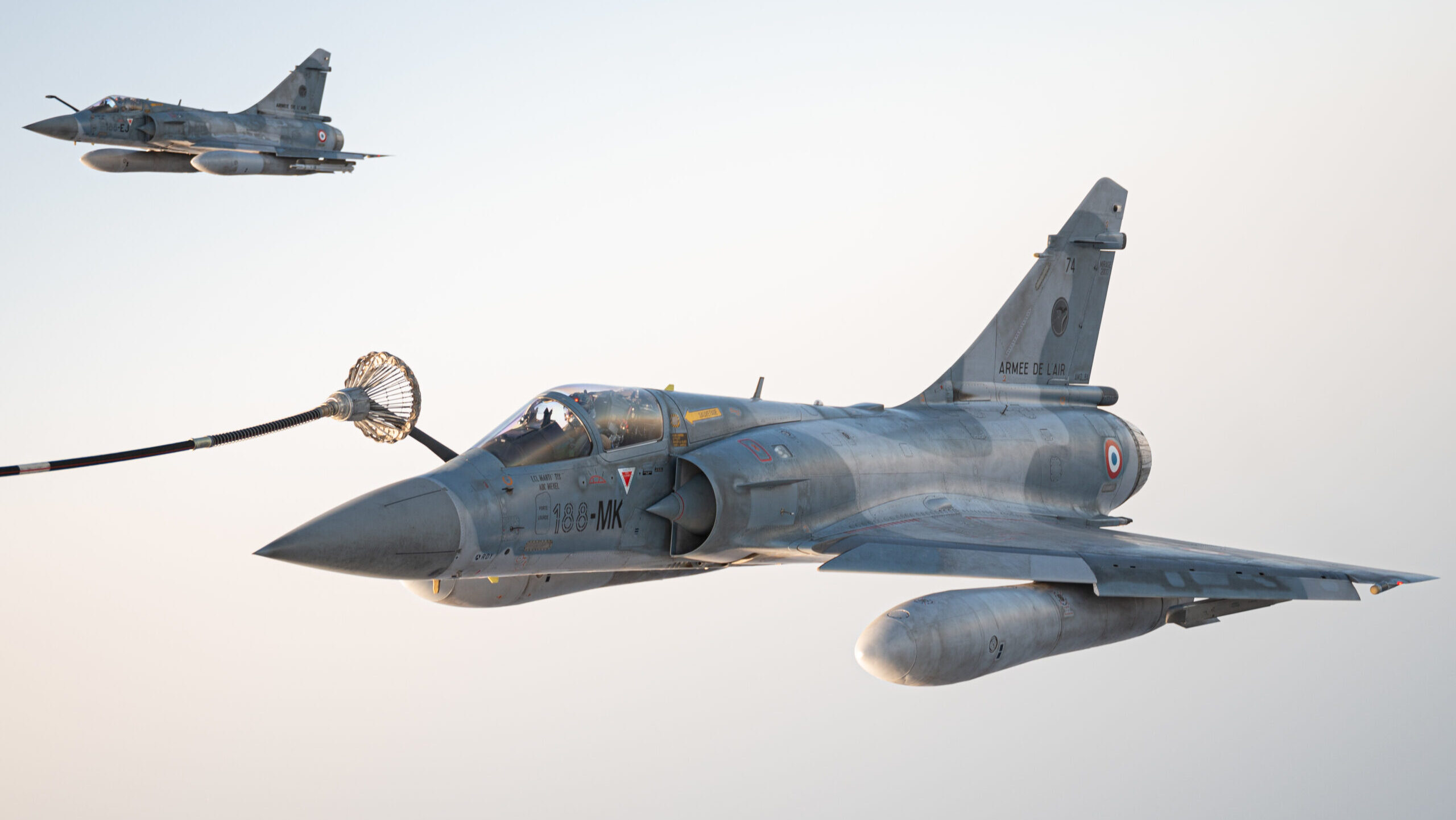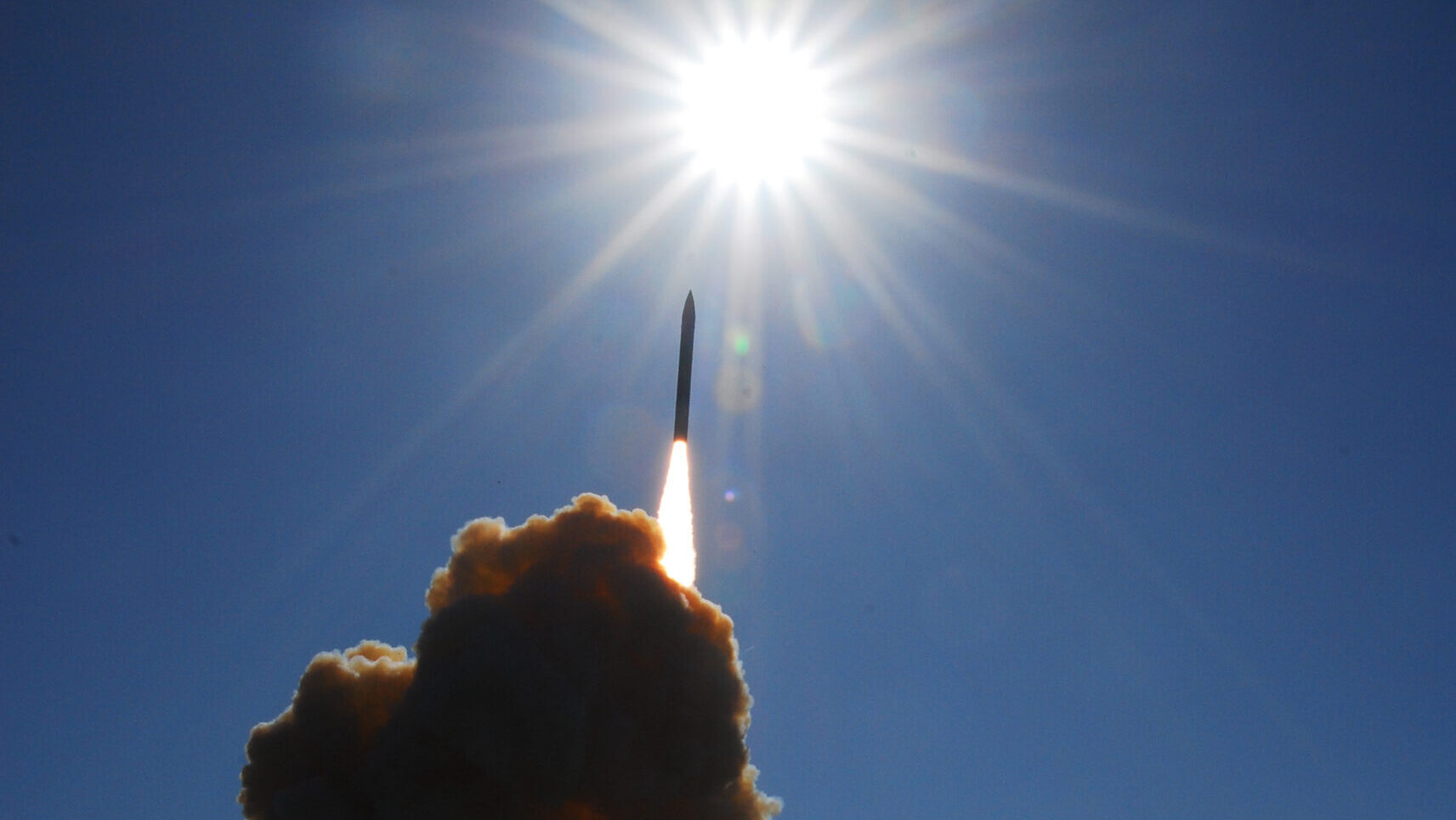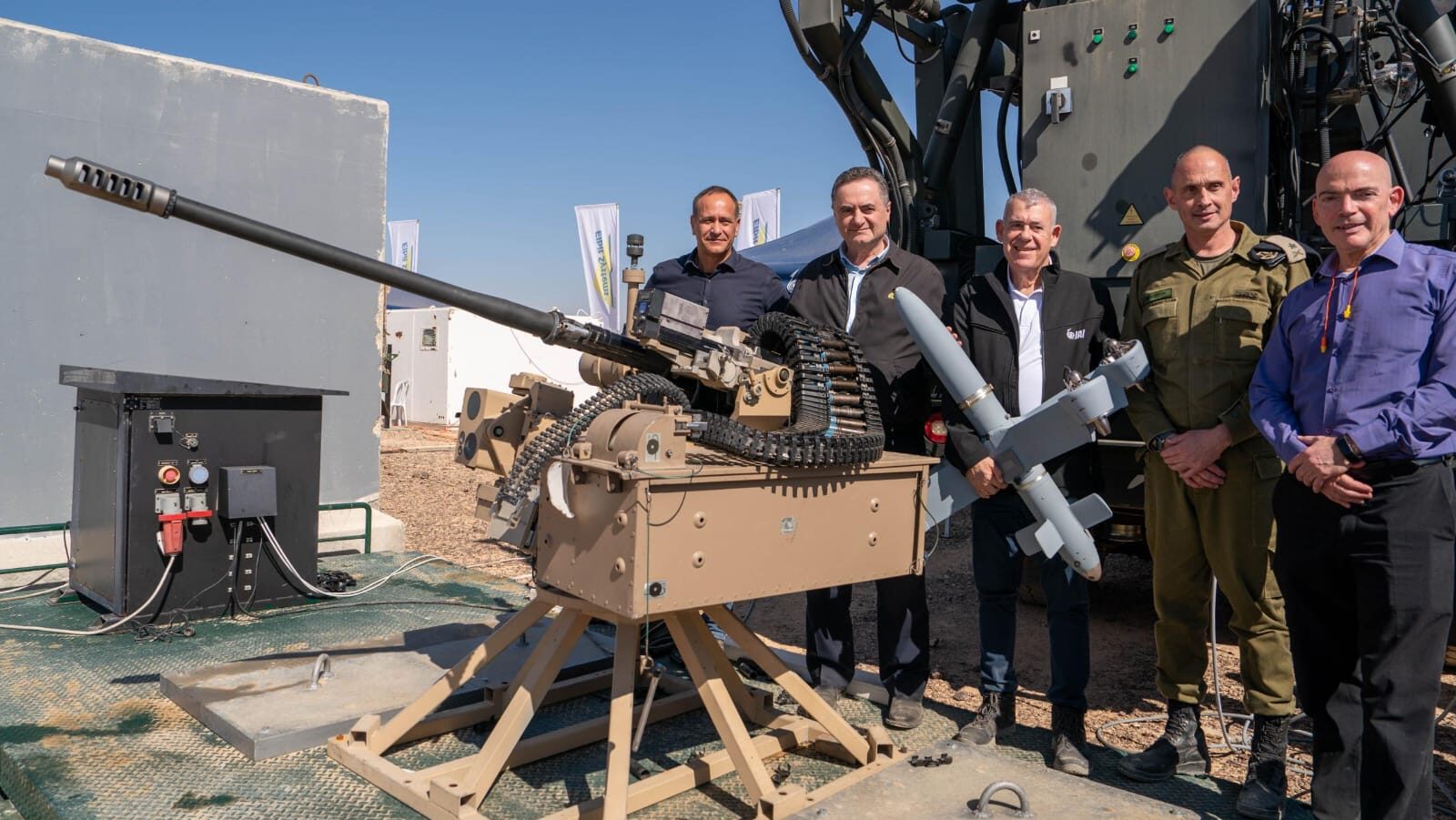
Officials pose with some of the technology shown off at the counter drone demonstration in Israel. (Israeli MoD photo)
JERUSALEM — The Israeli Ministry of Defense has completed a new round of trials testing various counter-drone solutions, the ministry said in a Feb. 5 statement, as the military here seeks an accelerated focus on the unmanned threat.
The latest test run, focused on countering smaller drone threats, involved the nine Israeli companies and twenty “advanced counter-drone technologies,” the ministry said. The trials took place in southern Israel’s Negev desert, where there is ample space for downing drones without any civilians around.
“The UAV threat is an evolving and multi-arena threat that has expanded to all our combat sectors, led by Iran and its proxies,” Israeli Defense Minister Israel Katz said in the statement in which he described the c-UAS effort as a “national” priority.
“Against our enemies, we are committed to continue advancing and introducing new capabilities to the battlefield in the near term. We will act to ensure maximum protection for our citizens and forces on the ground against UAVs from Iran, Yemen, Lebanon, and any arena where we may be required to respond,” Katz said.
During the recent multi-front war that Israel fought in the wake of the Hamas attack on October 7, 2023, the country faced numerous complex drone threats. Hundreds of drone attacks were carried out by Hezbollah. The Houthis in Yemen also were able to penetrate Israel’s airspace in July 2024 with a drone attack on Tel Aviv. Iranian-backed Iraqi militias also launched numerous drones at Israel.
The drones come in various shapes and sizes, most of them several meters long and with a wingspan of approximately two meters with a warhead at the front of the fuselage. But smaller quadcopter and other drone threats also emerged as a problem for Israel; the Ukraine war has illustrated the exponential growth that drones have had on the modern battlefield.
Hence, the new focus on c-UAS systems. The original trials back in October were initiated by Maj. Gen. (Res) Eyal Zamir, who has been tapped as the IDF’s next Chief of Staff — meaning a key figure in this push for finding new technology will soon have his hand on the helm of the IDF if it takes delivery of these new systems.
The IDF is also partnering with the US Department of Defense Irregular Warfare Technical Support Directorate (IWTSD) in this effort, the ministry noted. The NDAA for fiscal year 2024 included authorization for US-Israel counter-UAS cooperation, and the Israeli military was keen to point out American participation in the most recent trials.
“With more than twenty U.S. C-UAS experts from across the DoD participating in the blind test, this event plays a critical role in fostering cooperation between the nations, rapidly enhancing joint defense capabilities, and improving the chances of success,” the MoD said. “Following the analysis of current trial results, the IMOD plans to select several technologies for accelerated development and production processes, aiming to deploy new operational capabilities immediately,” the ministry added.
The methods of interception appear to break down into two broad categories. One is the use of guns or projectiles to shoot down the drones. The second method is to use drones to take down drones, either having a drone run into a drone or having it drop a net onto a drone. Laser interceptors did not seem to be a main focus of the trials, even though Israel has focused on developing various laser technologies for intercepting threats over the last several years.
As to who attended the trial, it was a mix of major firms and smaller companies.
Elbit Systems and Israel Aerospace Industries (IAI) both showcased various means of detecting drones and then shooting them down using a 30mm cannon. Rafael Advanced Defense Systems also brought its Mini Typhoon gun to the trial. All these companies have years of experience developing various systems for detecting and guarding against drone threats.
Xtend, in cooperation with Axioma and Elbit Systems, demonstrated an advanced drone-based interception system, essentially using a drone to take down a drone. Airobotics, Tamar Group, General Robotics, Smartshooter, Robotican and Elisra also demonstrated other concepts. Most of these companies participated in the first round of trials back in October.
“In the coming months, we will select the most suitable capabilities and implement them extensively throughout the IDF,” the head of Planning and Force Build-Up Directorate, Maj. Gen. Eyal Harel, said in a statement.


